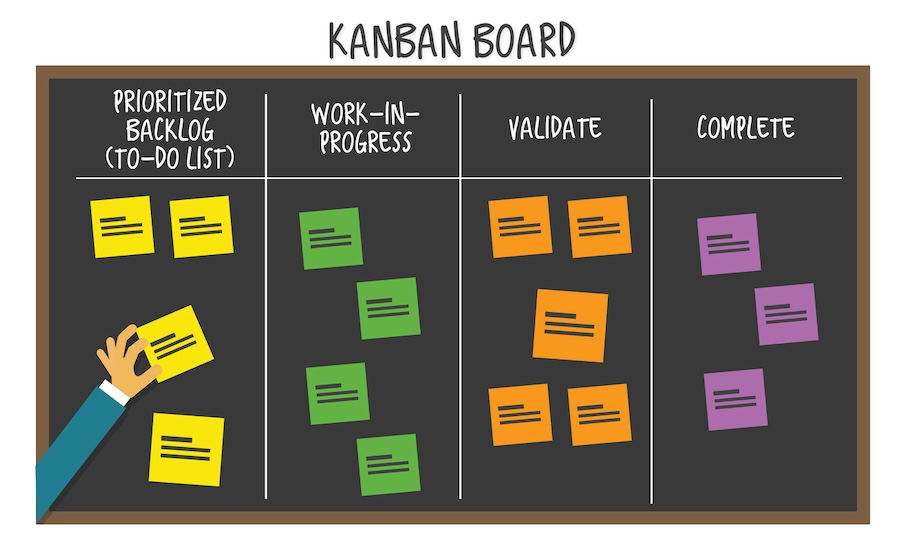Business process improvement (BPI) is a systematic approach to identifying and addressing inefficiencies within your organization. By optimizing how your processes work, you can reduce costs, improve productivity, and enhance customer satisfaction – giving your business a crucial edge.
What Is Business Process Improvement?
Business process improvement (BPI) is a structured way to analyze how your company operates, pinpointing areas where things can work smoother, faster, and more cost-effectively. By streamlining your processes, you can unlock benefits like increased productivity, reduced errors, and happier customers.
The business processes of an enterprise involve three types of activities:
- Operational Task: The repetitive tasks companies need to perform every day, like manufacturing, logistics, and reporting.
- Managerial Tasks: These tasks include budgeting, administration, and HR development.
- Supporting Tasks: The remaining tasks fall under this category, such as technical support, recruiting, accounting, etc.
All tasks belonging to these categories need to go through regular evaluation and correction to prevent inefficiencies. Through BPI, companies can continuously make positive changes to these operations according to the input of internal and external stakeholders.
These improvements either introduce new ways to do things or remove flaws from the current processes. In both cases, the aim is to streamline the process.
Business Process Improvement Importance
In today’s dynamic business environment, adaptation is key to survival. Here’s why BPI is crucial for success:
- Increased Efficiency: BPI pinpoints areas where processes can be optimized, saving time, resources, and reducing costs.
- Improved Quality: By refining processes, BPI helps ensure consistent, high-quality products or services, increasing customer satisfaction.
- Enhanced Agility: BPI allows your business to quickly adapt to changing market demands or customer needs.
- Competitive Advantage: A streamlined, efficient organization gains an edge over slower-moving competitors.
- Employee Development: BPI often involves process analysis and redesign, promoting skill development and greater employee engagement.
Modern businesses increasingly rely on software solutions to streamline operations. Business software adoption statistics showing a significant rise in automation and digital tools to drive process efficiency. Many organizations leverage enterprise resource planning (ERP), customer relationship management (CRM), and workflow automation software to implement and sustain BPI initiatives.
How Does Business Process Improvement Work?
Business process improvement works by identifying area of improvement, analyzing the current process, refine for better efficiency and implement it as explained below.
#1. Select a Process
First, you need to determine the areas or processes that need improvement. While numerous business processes go on in a company, you can prioritize the repetitive processes for improvement.
#2. Map Process Issues
Focus on the chosen process to identify the problems that need elimination. Mapping means visualizing the whole operation and finding out the bottlenecks.
#3. Analyze Business Processes
Now, you need to analyze the pain points to find the issues that can be improved. You can ask the related questions to the responsible persons to get the answers.
#4. Redesign the Process
At this stage, you need to redesign the process to make it better. Use the most suited methodology to eliminate the identified problems and make your processes more efficient.
#5. Acquire Resources
For any kind of improvement in the business process, companies need to secure the necessary resources. It could be getting new software, hardware, or manpower. For all these, get approval from management.
#6. Test the New Process
Before applying the BPI system in your organization, testing is a mandatory process. Check every workflow step so you do not miss anything critical. If you need any changes, this is the step to do that.
#7. Implement the Method
After successful testing and management approval, it is time to implement the methodology for business process improvement. You can start on a small scale and extend the scope for better results.
#8. Review and Refine
Your work does not end with the implementation phase. You need to constantly monitor whether the new methods are improving your process or not. Refinement might sometimes be necessary, and you have to implement that accordingly.

Business Process Improvement Methods
Depending on your business process and industry, you can choose the following methodologies for BPI.
Agile Methodology
Agile methodology frees a project from having a stringent deadline and lets you incorporate more iterations.

Based on the team and client feedback, the Agile methodology allows you to resolve the highlighted problems. It also improves communication and collaboration among all parties.
Lean Manufacturing
The objective of lean methodology is to eliminate waste and thus reduce cost. Apart from the manufacturing industry, others can also implement its core principles. Here, teams need to understand buyer perception to eliminate waste and redundancy.
Six Sigma
The popular six sigma approach can reduce variability and errors by leveraging data and statistics while maximizing value. Six Sigma involves using DMAIC and DMADV to achieve a streamlined process and increased ROI.
Total Quality Management (TQM)
Companies that use this methodology need to get their whole team on board to improve customer satisfaction. It offers employees an environment and work culture where experiences are appreciated, and they are encouraged to have a shared business goal. Additionally, TQM strengthens business skills such as strategic decision-making, problem-solving, and collaboration.
Theory of Constraints
The Theory of Constraints methodology is commonly used whenever there is a need for instant improvement. It can determine the process bottlenecks and improves them until eliminated.
Kaizen
The Kaizen methodology focuses on lean and agile practices. It slightly modifies your work and corporate culture for enhanced quality and productivity of processes.
Kanban
Kanban is a visual workflow technique that lets you identify problems and eliminate bottlenecks. As a result, you can increase efficiencies and monitor the progress of your initiative.

With the help of the best Kanban tools like Trello, you can manage project end-to-end and increase efficiency.
Just-In-Time
Just-in-time is method is ideal for manufacturing companies that want to minimize inventory costs by producing goods according to demand. In most cases, it is used with the Kanban methodology for accurate forecasting and avoiding work overcapacity.
Process Mapping
Companies can map out a process improvement plan using this workflow visualization technique. You can also use it to develop maps for specific roles or business goals.
PDCA
PDCA model stands for plan, do, check, and act. Being a part of the Kaizen methodology, it helps organizations locate inefficient processes.
Business Process Improvement Benefits
Business process improvement helps businesses to be agile, have better process visibility, reduce costs, stay compliant and boost productivity as explained below.
Business Agility
Through business process improvement, companies can become more capable of addressing the ever-changing requirements of the customers. They can quickly respond to the demands and refine the projects accordingly.
Better Process Visibility
To implement BPI, companies need to visualize the whole workflow. It allows them to monitor the business processes and measure the effectiveness of each stage.
Cost-effective
The aim of improving business processes is to remove bottlenecks and inefficiencies. As it lets you identify and eliminate unnecessary spending, the overall expense will automatically reduce.
Boost Productivity
To make your processes efficient, BPI removes all the repetitive and unnecessary tasks from the workflow. As a result, employee productivity increases manifold.
Compliance and Security
Implementing business process improvement means having a properly regulated and managed workplace. Hence, these companies can be compliant with regulations and necessary security measures in place.
Customer and Employee Satisfaction
Any improvised process is going to add value to the customers. With satisfied customers, you can have a thriving business. It also makes your team efficient and productive by eliminating unnecessary tasks.
Business Process Improvement Challenges
Business process improvement implementation introduces challenges like adoption resistance, unable to set goals, and time adjustment as mentioned below.
Resistance from Employees
The most difficult challenge that BPI faces is resistance from employees. Most people are against any changes and like to continue working traditionally. Hence, companies need to make the employees understand the benefit of this improvement. Otherwise, the initiative will turn into a total failure.
Inability to Set Goals
During this process, leadership should have clear and specific objectives. Without clear goals, they will be unable to get the complete picture of the company’s direction. While goals will let you know where to put your time and resources, a lack of them will cause difficulty in improving business processes.
Time Adjustment⏲️
To make things work, you need to give it some time. Many businesses think that process improvement is impossible due to their day-to-day activities. But, it is often possible to streamline the workflows and assign one person to implement this process. However, companies can even employ a contractor or freelancer to analyze the process.
Introducing New Technologies
Most business process improvements require bidding farewell to legacy applications and adopting new technologies. Most companies find this to be highly challenging. Besides being costly, you must also make your employees familiar with the innovative technologies.
Conclusion
Without business process improvement, it is impossible to stay in the competition. It allows you to find out your weaknesses and inefficiencies so that you can implement new methods to improve them.
Here, we discussed how the business process improvement world along with some useful courses and books to learn it. Once you have sufficient knowledge, start making the necessary improvements to take your business to the next level.

